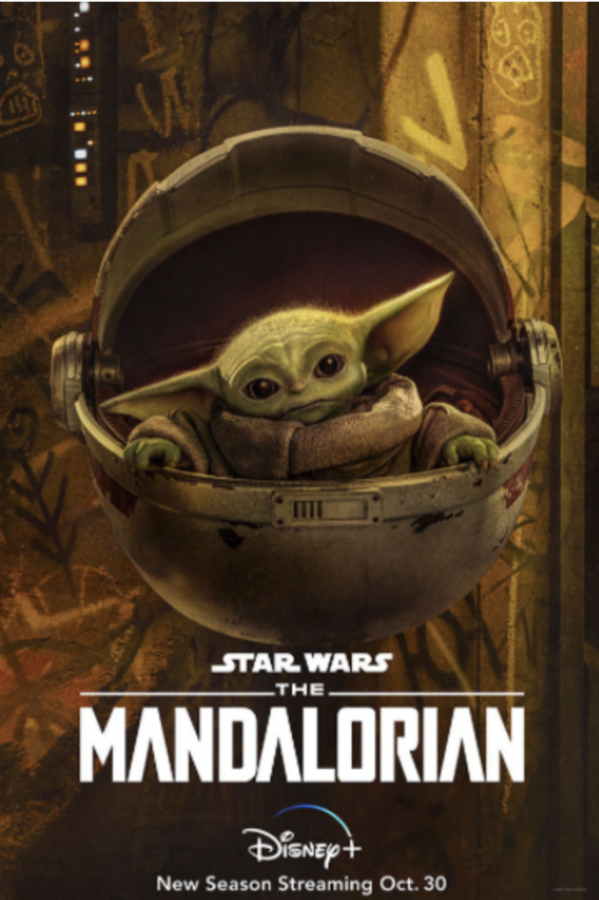Season two of “The Mandalorian” brings the series to new heights
December 18, 2020
Warning: this review contains minor spoilers for season two of “The Mandalorian”
Despite fears that COVID-19 would delay production, the second season of “The Mandalorian” wrapped filming days before shutdowns began, and the first episode was released on Oct. 30. The much-anticipated followup follows the titular character, known as the Mandalorian, as he embarks on a new quest to find the home of the creature dubbed ‘Baby Yoda’ by the fanbase.
Now, several episodes in, “The Mandalorian” has progressed far beyond the slow-to-develop but satisfying first season. As is expected for a second season, the plot has a stronger feeling of momentum behind it, with a more well-developed motivation for the Mandalorian himself. The season grows significantly in scope, bringing in new settings, new conflicts, and more mysteries to be explored. Expanded Universe fans (EU) will find plenty to be thrilled about this season, with appearances of fan-favorite characters from across the canon, including Cobb Vanth from the “Aftermath” novels, and Mandalorian warrior Bo-Katan Kryze and Force-wielder Ahsoka Tano from “Star Wars: The Clone Wars.”
With so many new—and not so new—introductions, the series runs the risk of sidelining its central characters. Yet despite this, the focus stays, for the most part, on the Mandalorian and Baby Yoda. This season does an excellent job of deepening their relationship while exploring the origins of both characters, and we get to see plenty of wholesome, smile-inducing scenes between them.
The visual effects and performances remain a high point of the series, in particular, the breathtakingly animated shots during the first episode’s action sequence. Pedro Pascal as the titular character, Giancarlo Esposito as Moff Gideon, and Rosario Dawson as Ahsoka Tano (succeeding voice actor Ashley Eckstein for the character’s first, slightly jarring live-action appearance) are all particular standouts among the cast.
Composer Ludwig Goransson deviates from the traditional orchestral standard set by John Williams and continues to use his own distinctive style, which fits the series surprisingly well. He still manages to sneak in some familiar materials, with renditions of “March of the Resistance” and “Ahsoka’s Theme” showing up.
However, the series isn’t without its faults; the much-maligned second episode earned its reputation as one of the worst episodes of the season. Despite a gorgeously animated flight scene midway through, the episode is essentially filler; another pitfall that the show falls into is its occasional unwillingness to keep the plot moving forward. Meanwhile, characters Cara Dune (Gina Carano) and Greef Karga (Carl Weathers) have comparatively little screen time, slightly disappointing given the events of the first season, which seemed to have set them up for larger roles.
But despite its occasional inconsistencies and tendency to slow the plot more than needed, the second season of “The Mandalorian” takes the series to new heights while leaving plenty to be explored in future installments. Overall, it creates an enjoyable watch for both seasoned “Star Wars” fans and more casual viewers, and I, for one, am thoroughly looking forward to the next season.
Season two of “The Mandalorian” brings the series to new heights


